Media | Articles
90 years ago, Henry Ford’s Greenfield Village opened its gates
Henry Ford never intended for his innovative Edison Institute to be open to the public. However, it didn’t take long for him to realize that excluding the public from this treasure trove of American history would limit its educational potential and disappoint the hundreds of curious people who showed up each day. It needed to be shared.
So, on June 22, 1933—less than four years after the Institute was officially dedicated—the automotive pioneer and historian threw open the gates to his remarkable collection. Nine decades later, more than 1.7 million people annually enjoy all that “America’s Greatest History Attraction” has to offer.
“The gifted man bears his gifts into the world, not for his own benefit, but for the people among whom he is placed,” Ford wrote in 1922, long before the Edison Institute came to be. “For the gifts are not his; he himself is a gift to the community.”
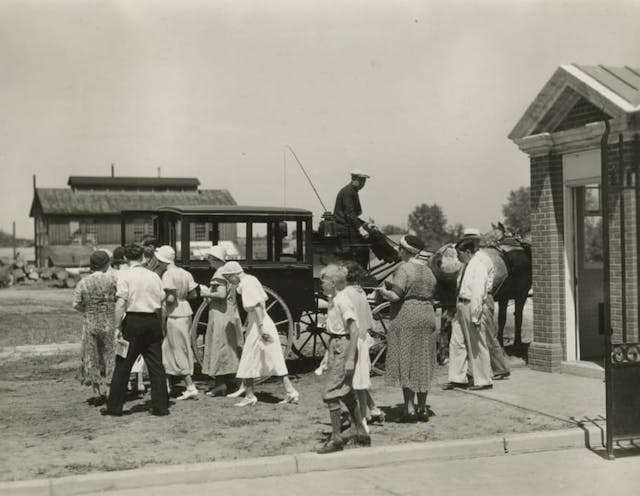
Located in Dearborn, Michigan, and now known as The Henry Ford, the complex encompasses the Henry Ford Museum of American Innovation and Greenfield Village, as well as the nearby Ford Rouge Factory Tour.
It all began with Henry Ford’s personal interest in preserving items of historical significance, a collection that he began accumulating as far back as 1906. Ford’s idea of “historically significant” often meant “common,” as he acquired not only rare artifacts but also everyday items from America’s past that helped tell the story of the country’s founding and development. Later, Ford would begin collecting actual buildings—like the Wright Cycle Shop, operated from 1897–1908 by aeronautical pioneers Orville and Wilbur Wright in Dayton, Ohio—and carefully move them to the Michigan property.
Marketplace
Buy and sell classics with confidence
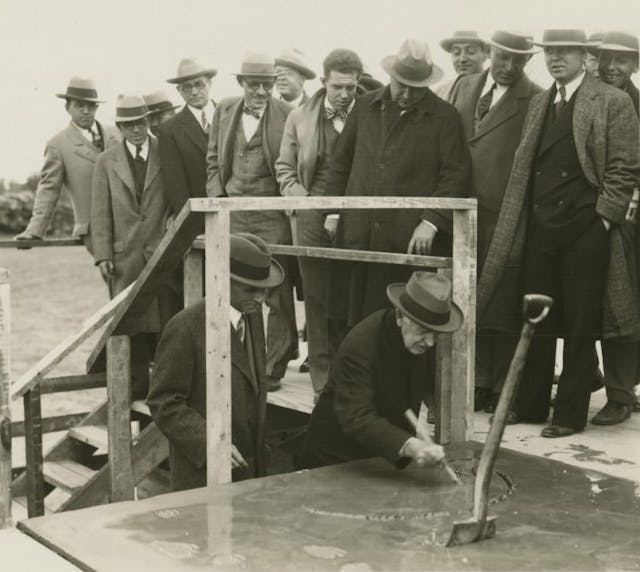
The Edison Institute, named for inventor and friend Thomas Edison, was originally a private site for educational purposes only. It was dedicated by President Herbert Hoover on October 21, 1929, the 50th anniversary of Edison’s first successful incandescent light bulb. Among the 250 attendees were French physicist and chemist Marie Curie, Eastman Kodak Company founder George Eastman, business magnate John D. Rockefeller, actor and social commentator Will Rogers, and Orville Wright.
In addition to the museum and the outdoor Greenfield Village site, the Institute was also home to the Greenfield Village School, an experimental education facility that promoted hands-on learning.
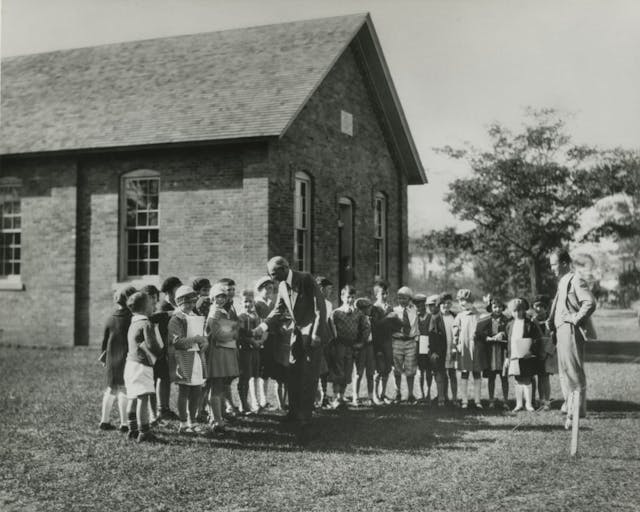
“The whole school would start each day at the Martha Mary Chapel in the village, where we would have a 20-minute non-denominational service,” former Greenfield student Bob Panter told Hagerty in 2017. “Students would sing a few hymns, a couple of students were assigned to read a poem, and a teacher might give a motivational word or two, often from the Bible. Then we would all disperse into the village or museum to our assigned areas and get on with our day.”
According to the book A Home For Our Heritage, in 1932 construction began on the Greenfield Village gates, a visiting room, and public restrooms as more and more uninvited visitors began to look around the property.
“The public, [seeing] articles in the nation’s periodicals, knew well that Henry Ford had something going on behind his brick walls,” author Geoffrey C. Upward wrote in 1979. “The few curious passersby a day grew to about 400 a day early in the 1930s. By the late spring of 1933, however, a curious public had swelled to nearly 1000. To turn this many people away simply amounted to bad public relations.”
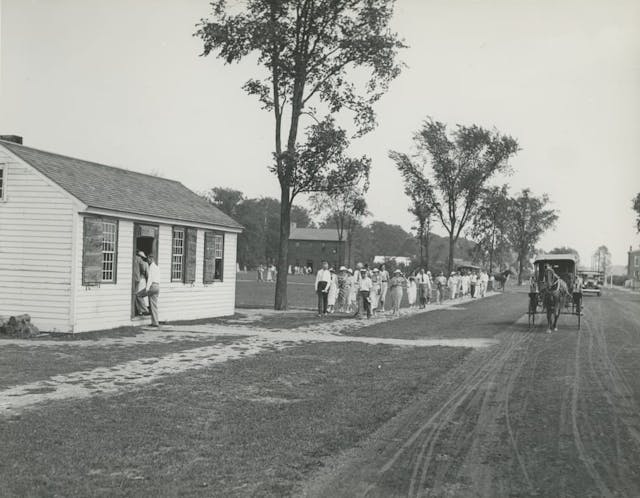
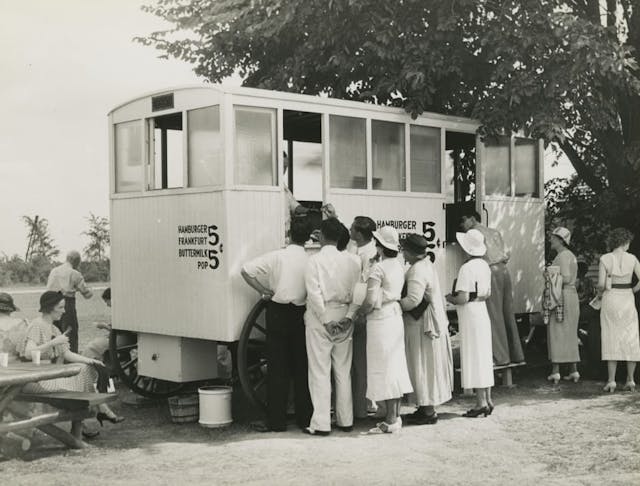
When the gates finally opened, Greenfield Village had 28 buildings, and visitors could tour the site and watch old-school craftsmen create items at various shops on the property. Admission was 25 cents for adults and 10 cents for children.
The Village, encompassing 80 acres, is now home to nearly 100 buildings, some dating as far back as the 17th century and others that replicate historic sites like Edison’s laboratory in Menlo Park, New Jersey. In addition to self-guided tours, shops, and food, guests can ride a train or take a leisurely stroll in one of many Model Ts onsite.
The neighboring Henry Ford Museum of American Innovation occupies more than 12 acres, much of that by the main exhibition hall, which is essentially a single eight-acre room with a distinctive teak floor. Taking a page from the Greenfield Village theme, the front façade of the museum replicates Philadelphia’s Independence Hall.
Among the historical items in the Ford Museum are the rocking chair that Abraham Lincoln was sitting in on the night he was assassinated in 1865, the bus in which Rosa Parks was riding when she stood up to racial prejudice in 1955, a full-size steam locomotive, an Oscar Mayer Wienermobile, several airplanes, a fully functioning ’40s-era lunch car, and the Presidential limousines of Franklin D. Roosevelt, John F. Kennedy, and Ronald Reagan.
The third piece to the puzzle, the Ford Rouge Factory Tour, is a behind-the-scenes look at a modern, working automobile factory. Boarding buses at the museum, visitors are taken to the River Rouge Plant and Dearborn Truck Plant, an industrial complex where Ford has built cars since the Model A and that once employed 100,000 people.
Anyone who has visited The Henry Ford can attest to its founder’s extraordinary vision, not only in the automotive industry but in preserving history. It was a task that Ford did not take lightly.

“Many people seem to believe that Greenfield Village and the Edison Institute & Museum … with their specimens of American life and industry, are just a kind of an antiquarian hobby of mine,” Ford wrote in 1934. “I do not deny that they have given me a great deal of interest and pleasure, but the project is vastly more than a hobby. It has very definite purposes [that] I hope will have results lasting down the years.”
Mission accomplished.
***
Check out the Hagerty Media homepage so you don’t miss a single story, or better yet, bookmark it. To get our best stories delivered right to your inbox, subscribe to our newsletters.
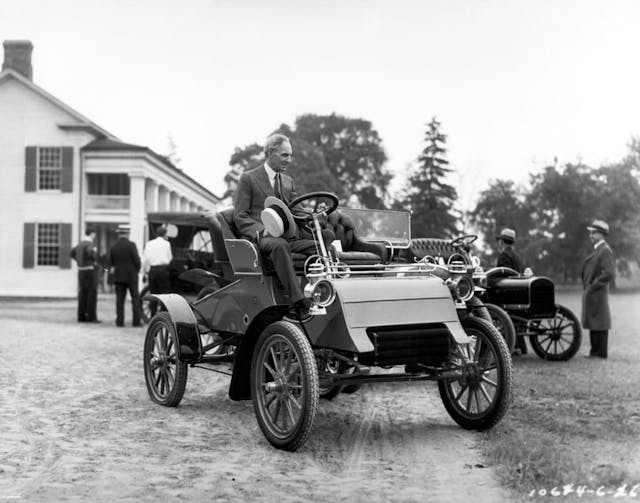

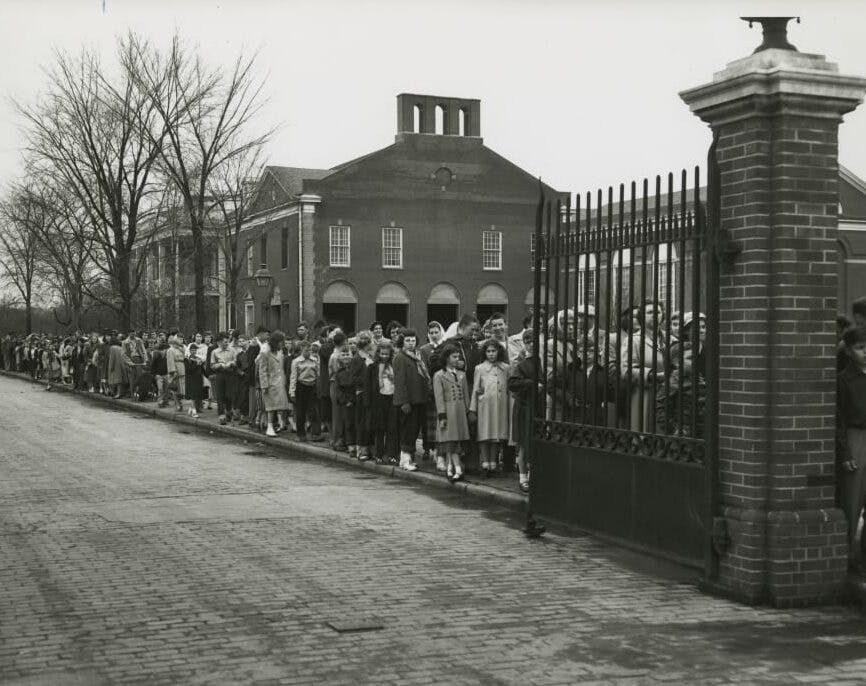
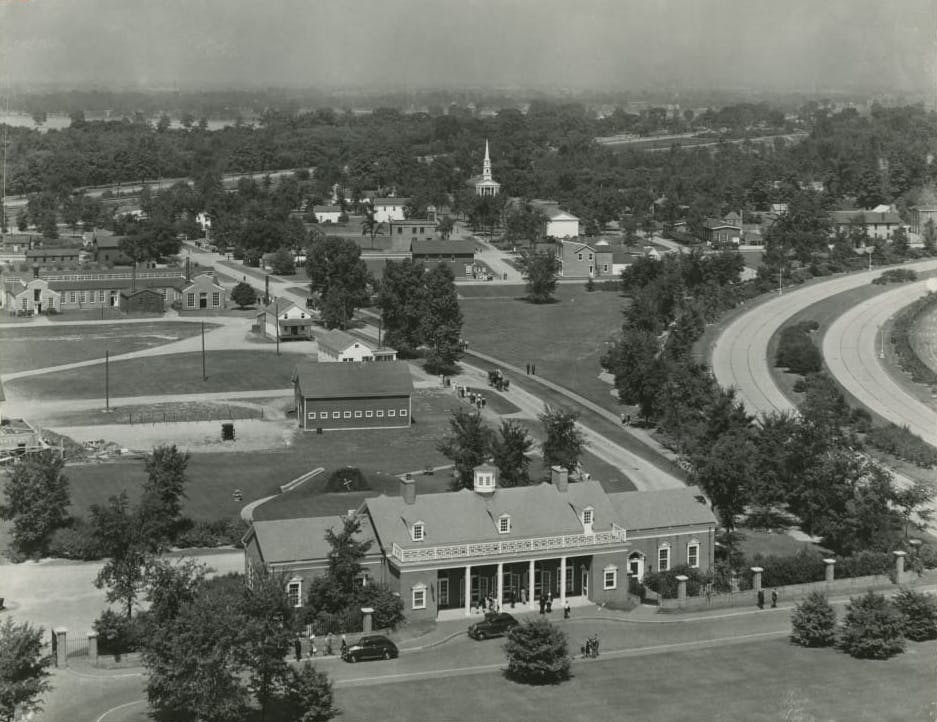











I would be interested in visiting this if I ever get back around to this part of Michigan.
I would be interested in re visiting the Henry Ford if I ever get back to America. I visited it in 1989 on my way to Hershey Fall Meet and loved every minute of it and as I’m sure it’s much bigger, and more interesting than back then. Chances are nil at 84 but I can still dream.
When we visited all three sites, I scheduled 1/2 day for Greenfield Village. We spent the entire day there and that was not nearly enough time to see it all.
Got a chance to visit all three sites back in the summer of 2000, along with the Romeo Engine Plant. Was quite an interesting few days!
…interesting article – The Henry Ford – as it is now called, was The Henry Ford Museum and Greenfield Village previously. I was one of the lucky kids that successfully interviewed and passed the tests administered – and was admitted to start school there – Greenfield Village School – in 1960…I went there from Kindergarten through 6th Grade, graduating in 1967. Looking back on it now, it was a truly unique & amazing experience to go to school there. In addition to our regular classwork, we had art, music, gym, swimming, and French. We also had instruction in weaving, pottery, square dancing and acting in the annual Christmas play – at the Henry Ford Museum theatre. Our days still started in the Martha Mary Chapel as described in the article, and we ate lunch at the Clinton Inn, also shown in the article. Each grade had its own primary classroom – the one shown was Scotch Settlement School, which was our 6th Grade classroom. 2nd Grade was in a log cabin – McGuffey School, while 3rd Grade was in an old while pillared Town Hall. The entire Village was our campus, and we walked to the other classes such as art and music. I stay in touch with my grade school friends, who now live all over the country…we also have reunions that include a trip back to Greenfield Village. I go back on my own, with my family, several times per year – for automotive enthusiasts wanting to visit, the annual Old Car Festival – Sept. 9 & 10, 2023 would be ideal…brass era through the 1930’s – cars on display and driving around the Village – it all looks like the 1920’s all over again – highly recommended!!
That’s amazing! Thank you for sharing!
Wow good stuff, love the accounts of the past times and future recommendations.I am feeling a road trip in September!
I was lucky to have a great uncle that was like a grandfather to me.
Frank was a lead engineer at GMC and was involved with truck design all the way back to the Goodyear Wingfoot Express trucks. He assisted the man that designed the first tandem real axles for trucks.
This all led to GMC.
Some how along the way he and Henry Ford met and became friends. Both were country boys who grew up on farms in the country and had a fixation on mechanical things and technology.
Well Frank was invited to the dinner for the Edison Institute. He did not go that night because it was pouring rain and his car had side curtains. To the day he passed away he said that was his greatest mistake he always regretted. Keep in mind he lived a life that would have filled 4 lives. Starting with drafting maps in balloons during WW1 and traveling the world 5 times by ship.
I recall when he took me the village and showed me around. I have since been back several times since it is only a few hours from me.
Henry was a flaw and complex guy but over all he did leave the world a better place and one where history was not destroyed and lost.
When in these buildings I often ponder how they may have been lost long ago as no one would have cared.
We here in Ohio are bless to have the HF museum close by as well the Museum of the Air Force which is by far the best aviation museum in the world. Yes the Smithsonian is excellent too but there are so many more planes and things at the AF museum that are on display. The Smithsonian often has much put away.
Anyways a trip to the HF and Greenfield Village is a must. They even took us there on a school trip once.
Love this! I have a feeling I could sit for hours and listen to your stories about your great uncle and his friendship with Henry Ford. Thank you for sharing!
I used to kid my mom. I told here he was the real life Higgins on Magnum PI.
His life was filled with many adventures and I wish I was a bit older to have been able to ask more questions. His life would fill a book.
I recall asking him if he knew Ed Cole and others GM engineers and he was yes as it was just another co worker.
He saw it all from he Wright Brothers on up. yet he said the best thing evert to happen was the SAE standardization of fasteners. Spoken like a true engineer. He said none of these many great things we saw happen in the 20th century would have come as soon as they did with out standardization.
Regarding the heading photo for the article: I wonder who got fired for allowing Henry to be photographed in a car with a flat right rear tire. -Haha!
Oh, man! Great eye!
Definitely sourced from his buddy, Harvey Firestone!
I was born in Detroit in 1958. Henry Ford was a household name. My dad’s family lived in Highland Park and worked for Ford. Immigrants were given classes on becoming American and cherished their jobs. He even had his own hospitals for workers. Today it is a large network. I remember as a kid going to the Rotunda, and of course school field trips to Greenfield Village and Henry Ford Museum. One trip I we actually toured the entire car making plant and I watched them make cars from forming the steel to driving 1968 Mustangs off the line. Henry Ford realized that he helped industrialize the country and the world and was largely responsible for the loss of the old ways he grew up with. That was one of the reasons for building Greenfield village, to capture the past before it was erased.
I’ve been to the Henry Ford on several occasions. It presents an incredible display of American history and technology. Truly a bucket list place to visit. The eclectic collection of cars on display includes a LeMans winning GT40 and one of the six Bugatti Royales that were made, but the museum is so much more, with wonders around every corner. Allow at least two days to really appreciate everything the facilities have to offer.
Totally agree!
Ah, a cleansed collection in tribute to vile old men. Wonder what despicable rant ole Hank was spouting into Edison’s ear, to generate that conspiratorial smile? Wonderful collection of Americana, but also acknowledge the restricted entry for that school, and where are photos of his personal thugs and copies of his viscous anti-sematic newspapers? Yes, he contributed greatly to the industrialization of the country, and at times did good deeds, like the collection, but glorifying him is omitting the true history of a deeply flawed personality. No hard feelings, I drive a new electric Ford, but let’s not embrace selective history.
Jeff if you look back in history many people had dark segments of their lives some worse than others.
History has hind site that lets us scrutinize even deeper things that even back then they did not understand or consider the harm.
That is not an excuse to continue doing so today but you can never judge history by present terms or you will always find yourself disappointed.
Best to learn from out past flaws and not to repeat them.
I wager even your life 75 years from now will present flaws that you feel are ok right now but they will see differently in the future.
Lives are like looking into a well. You see a clear smooth surface but we all have a rocky bottom. The distance between them is how well we live our lives. To this point only one man was able to walk on that water.
He who is with out sin cast the first stone!
Sorry, but a guy who Hitler “admired” was despicable in character while alive, and calling that a dark chapter is ignoring the whole dark book. The triumvirate of Ford, Edison and Firestone was a vile source of hate through many decades. The respect for their industrial achievements can be recognized, but their evil actions should not be discounted as an aberration.
Man, who peed on your campfire? Such bitterness. No one is perfect, to be sure, and these guys may have had bigger faults than many. However, there are one heck of a lot of us out here who are not perfect either, but won’t leave the world a better place than we found it – unlike the men you mention.
Well stated.
Been to the Henry Ford, and found it to be a great experience. And, I got a free ride in a real 2003 (yes, 2003) Model T!
My Dad took us to Greenfield Village about 70 years go. I would have been 10. Marvellous experience that I remember to this day. I must go back and see it again. Thanks for the great article.